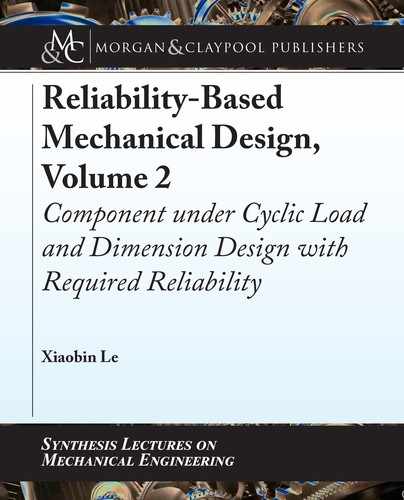B.3. THE MONTE CARLO METHOD FOR EXAMPLE 2.8 229
% Check the convengence condition
if ddp(j,n+2)<=0.0001;
break
end
% Use new design point to replace previous design point
for i=1:5
x0(i)=x1(i);
end
beta=beta0;
end
% Calculate and display reliability
format short e
disp('reliability')
R=normcdf(beta0)
% Display e iterative process and write it to Excel file
disp(ddp)
xlswrite('example2.7',ddp); % Write the data in a
% Excel file
B.3 THE MONTE CARLO METHOD FOR EXAMPLE 2.8
% The Monte Carlo method for Example 2.8
% The Limit State function: g(M,ka, se, kf, d)
clear; % clean memory
%input the distribution parameters dp1 and dp2
dp1=[0.772,24.7,2.0,2.0,11.5]; %The means
dp2=[0.0757,2.14,0.0025,0.0025,1.5]; %The standard deviation
kb=0.8507;
% The trail number
N=15998400
% Generate random numbers for each random variable
Rka=random('norm',dp1(1),dp2(1),1,N);
Rse=random('norm',dp1(2),dp2(2),1,N);
Rh=random('norm',dp1(3),dp2(3),1,N);
Rb=random('norm',dp1(4),dp2(4),1,N);
RMa=random('norm',dp1(5),dp2(5),1,N);
nn=0;
for k=1:N
% Calculate the value of the limit state function
..................Content has been hidden....................
You can't read the all page of ebook, please click here login for view all page.
